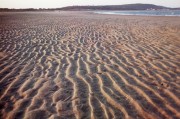23,000 BCE – 1121
-23,000
|
The most recent glacial episode in Maine began about 25,000 years ago, when the Laurentide ice sheet overspread New England. |
-19,000 |
Climatic warming forced the Laurentide ice sheet to start receding. |
-11,800 |
Ice sheet recedes from the continental shelf east of Long Island and reaches the present position of the Maine coast. |
-10,000 |
Last glacier recedes to northern Maine. |
– 9,000
|
Ocean, that invaded inland after the glacier, recedes to near current coast. Dense forests cover the state. First Native Americans move into Maine from south or west. |
– 8,000
|
Glacier completely gone from Maine. |
– 3,500 |
Birch bark canoe has been developed |
– 1,000 |
Maine’s Native Americans adopted the use of pottery (beginning the Ceramic Period for archaeologists). |
986 |
Biorn (or Bjarn), a Norseman, first European to visit America, lands at Cape Cod* |
1000 |
In southwestern Maine, corn, bean, and squash agriculture has been added to an existing hunting and gathering base. Lief Erikson and Norsemen, investigating Biorn’s story, spend the winter near the present site of Fall River, Massachusetts, and name the place Vinland.* |
1003
|
Leif Erikson explores the Maine coast. |
1008 |
A Norse couple spend three years in Vinland. Their son, Snorri Thorfinnson, was the first white person born on the American continent.* |
1121 |
Bishop Eirik (Erik, Erick) visits Vinland as a missionary. |
*Dunnack, Henry E. The Maine Book. Augusta, Maine. 1920. (Dunnack was Librarian of the Maine State Library.)


